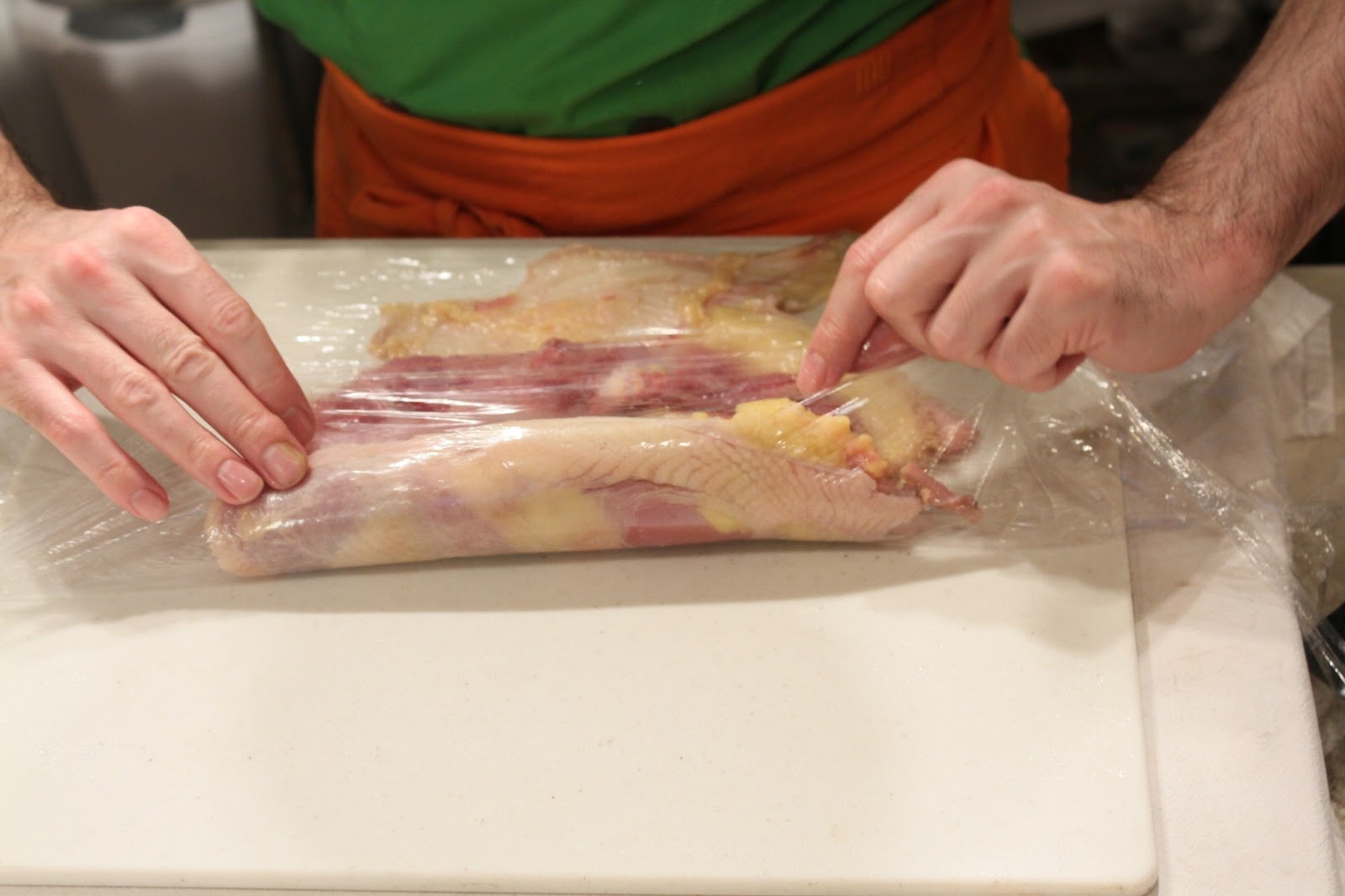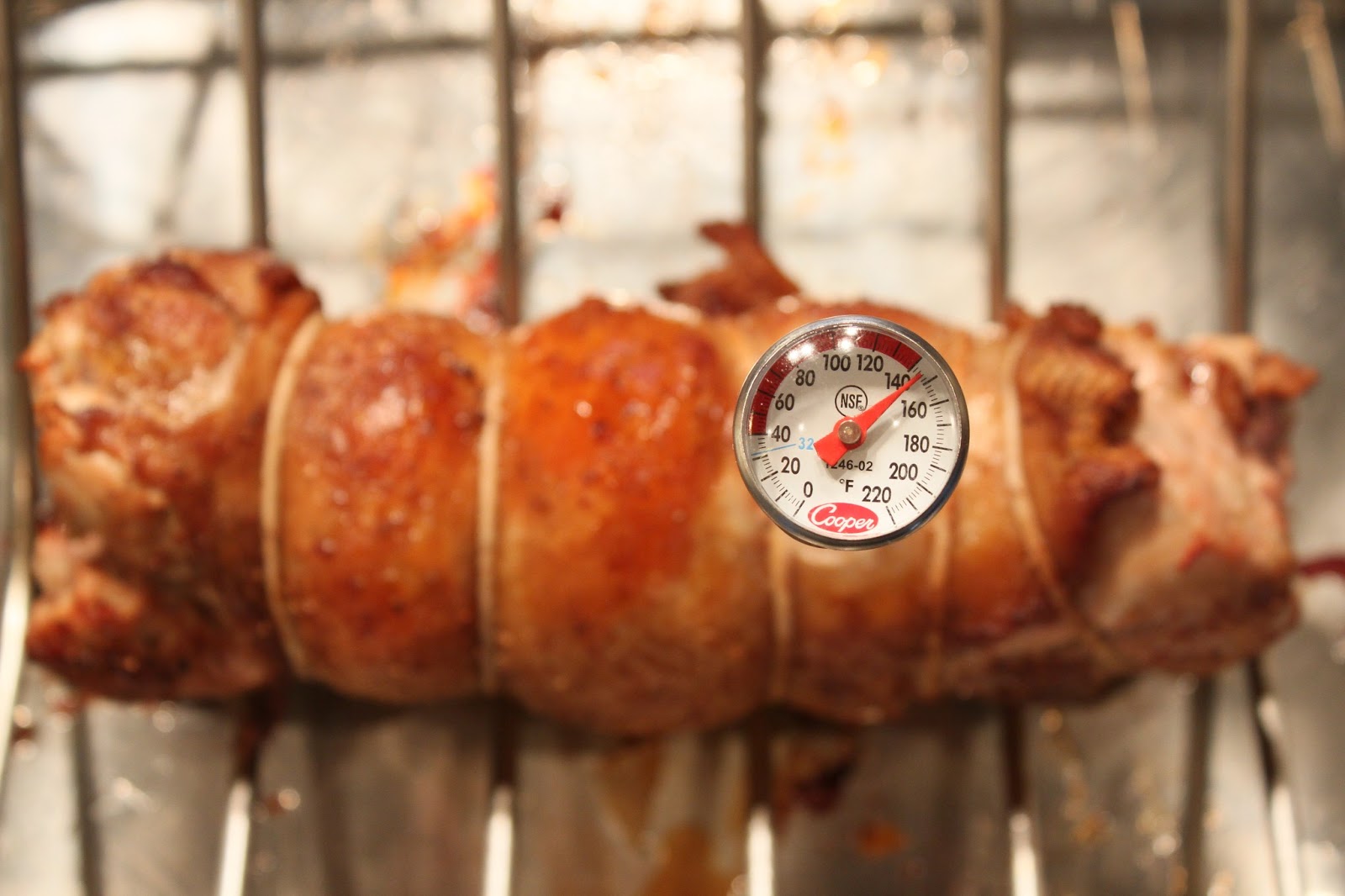A while back, a new cooking technique gained some attention - the Modernist technique. It gained attention for the $300 cookbook full of breath-taking photographs of culinary daring-do. A few years have gone by, and now there is a marketplace for the home gourmand who wants to try their hand at this.
We started at The Modernist Pantry with some basics, including meat glue. This is transglutaminase, or in layman's terms a binding enzyme. We had already decided on pheasant for my birthday. With the purchase of the meat glue, we determine what shape it would take.
 |
| Meat Glue |
And I mean this quite literally. What meat glue allows you to do is deconstruct a piece of meat and put it back together however you like, what would in Modernist culinary terms be known as Reconstructed. And that's what we did.
The Pheasant
My counterpart prepped the pheasant last night. The concept here is that you want to skin and bone the bird keeping the skin intact. Then you take the boned meat and form a ballotine.
Now, here's where the meat glue comes in. As you reassemble your meat into the new ballotine shape, you use the meat glut to help hold it together.
It comes in a powder form that is triple sealed for its protection because it is sensitive to oxygen. It is stored in zero-oxygen containers filled with nitrogen for shipping. Not that meat glue is dangerous per se. You just don't want it to get airborne and then breathe it in. We covered our faces with those nice Russian cotton sack towels from Cook's Corner for this part. Then, Gareth very carefully pieced our pheasant back together using a small spoon to spread the glue on each piece.
Similar to a roulade, you'll want to use plastic wrap to help roll it up. Once rolled up and the ends secure, this will need to set for a few hours in the refrigerator. Ours set overnight and was fine.
The next day, we were ready to cook. This being our first try at this, we discussed whether or not to bind. We chose not to.
Gareth used some duck fat to brown the ballotine on the stovetop, and here is where we learned a lesson. Meat glue is some pretty neat stuff, but it's not magic. During the browning process, he had to shift gears and do a quick bind to keep things together.
Once browned, it was roasted in an oven at 350 until it reached an internal temperature of 150 - about 40 minutes.
The Sauce
We paired our pheasant with a clear celery sauce. Gareth used regular celery, Chinese celery, and celeriac root, along with white onion and leek. He cooked this slowly on the stovetop in a large saucepan with butter, adding water as needed to ensure that the veg did not start to brown.
Once the celery has become flaccid, transfer the entire contents of the pan to a large Pyrex measuring cup. Once the veg has become soft, it means that the chemical bonds holding the vegetable together has broken down. It is through the breaking down of these chemical bonds that we extract flavor form food items.
Use an immersion blender to puree it, and then transfer it back to the saucepan and let it cook a little more. Then strain it off, separating off and retaining the liquids. This can be done fairly easily by setting up a sieve over your large measuring cup. Use a ladle to transfer the sauce into the sieve Then use a spoon to agitate the puree to help the liquids filter through.
Once you have your liquid, transfer it back to the saucepan and let it simmer with some chopped leek and white onion. Gareth also used a little potato starch to thicken it.
The Veg
Gareth provided a wonderful mix of steamed vegetables to go along with this - ribbons of carrot and zucchini, celery hearts, a nest of zucchini, batonettes of leek, and a sprinkling of peas.
He sliced the ballotine and served it on top of toast rounds with the sauce and the veg.





















wow, what a fantastic dish for a birthday. Thanks for linking this in to Food on Friday: Meatloaf. Have a great week.
ReplyDelete